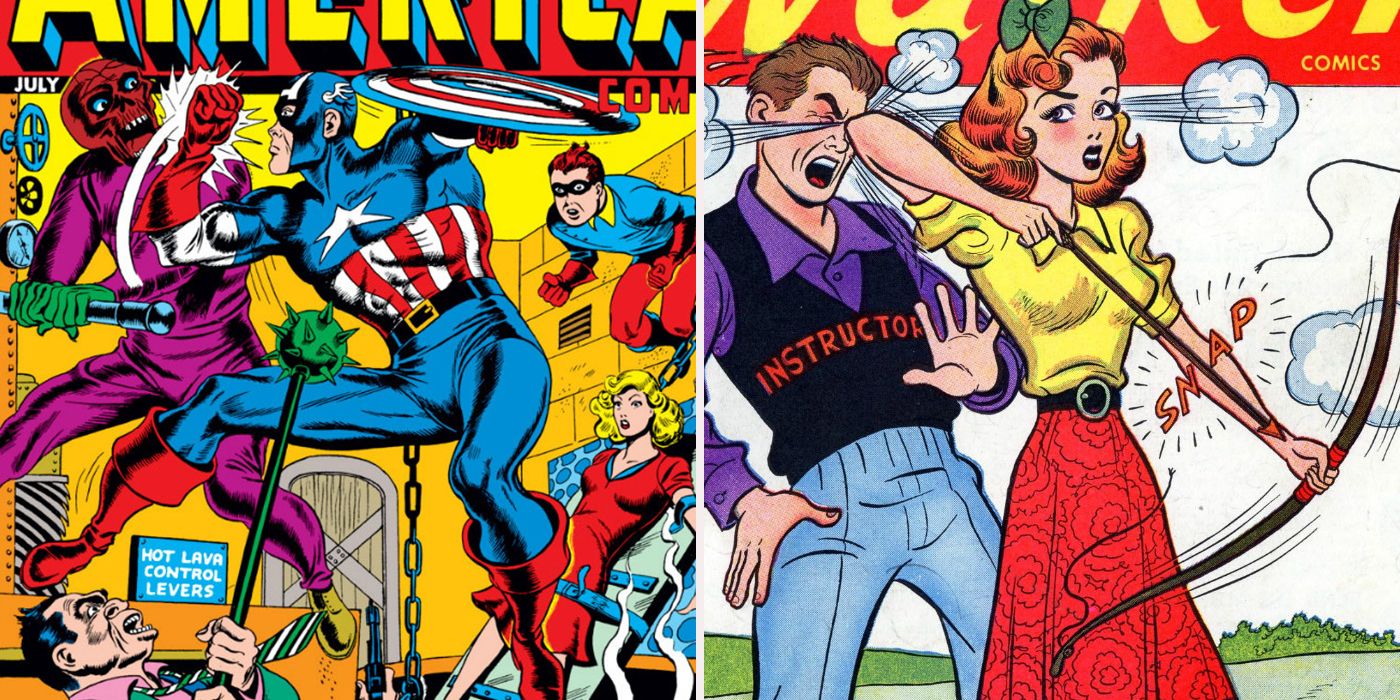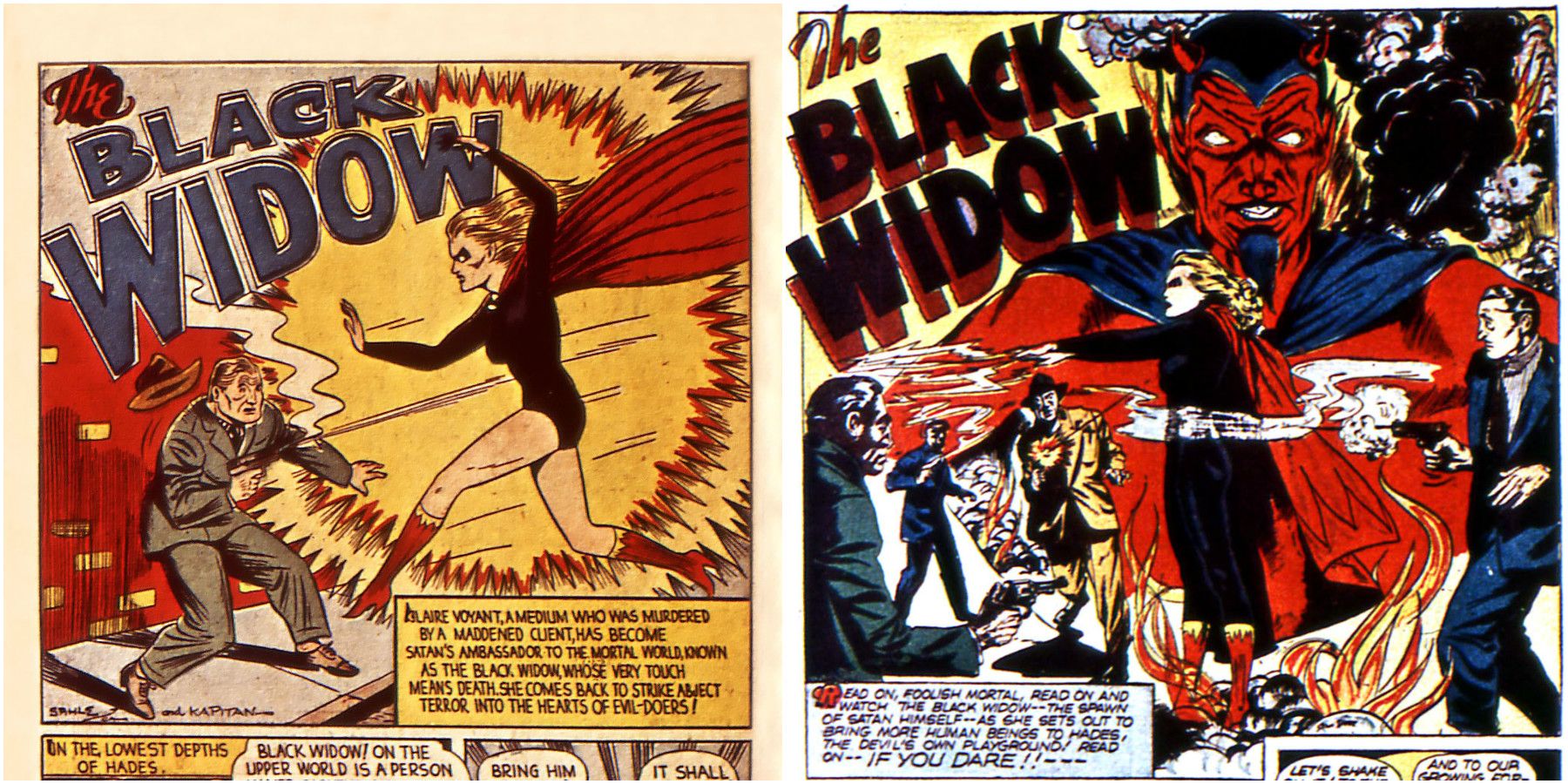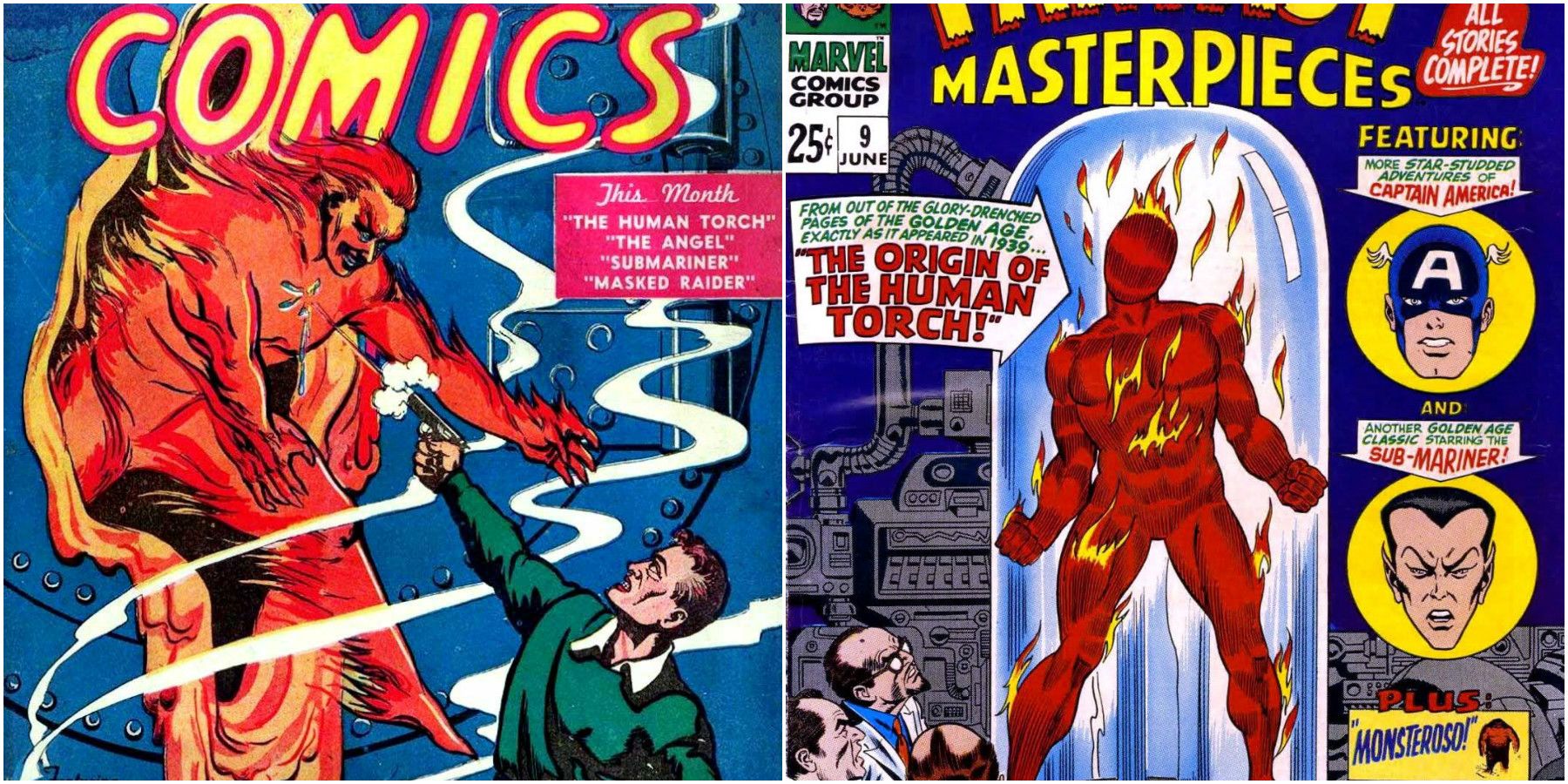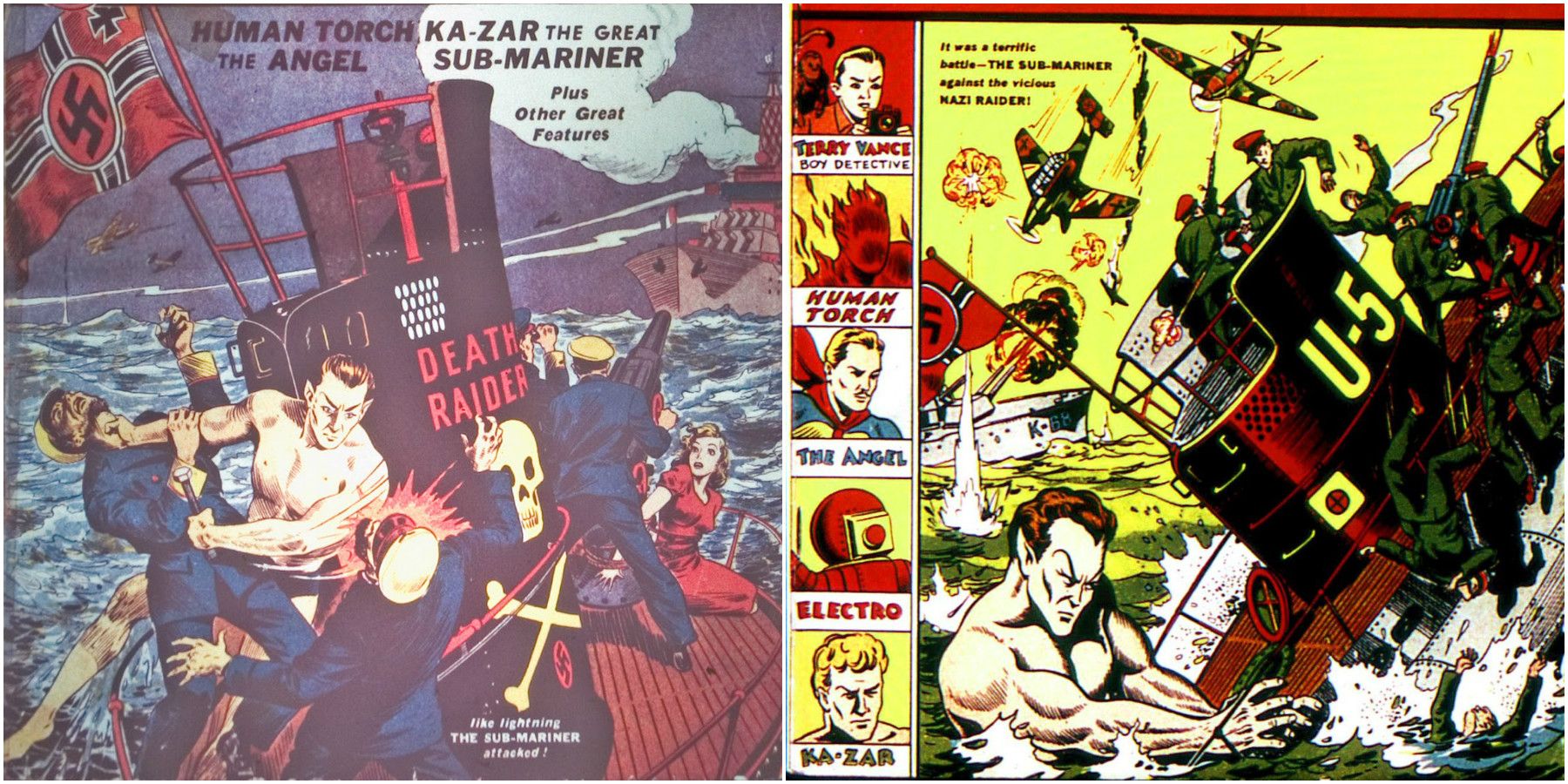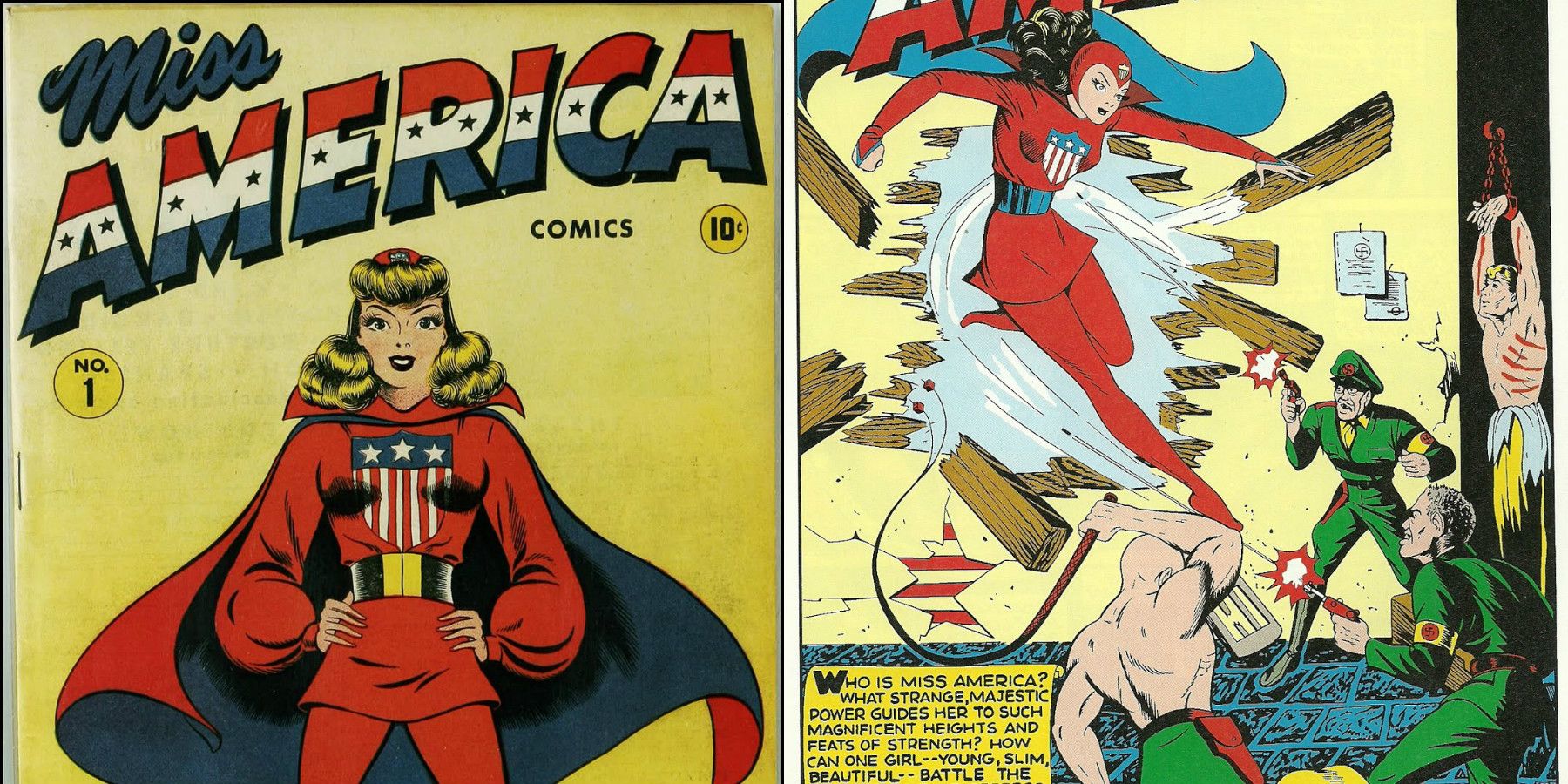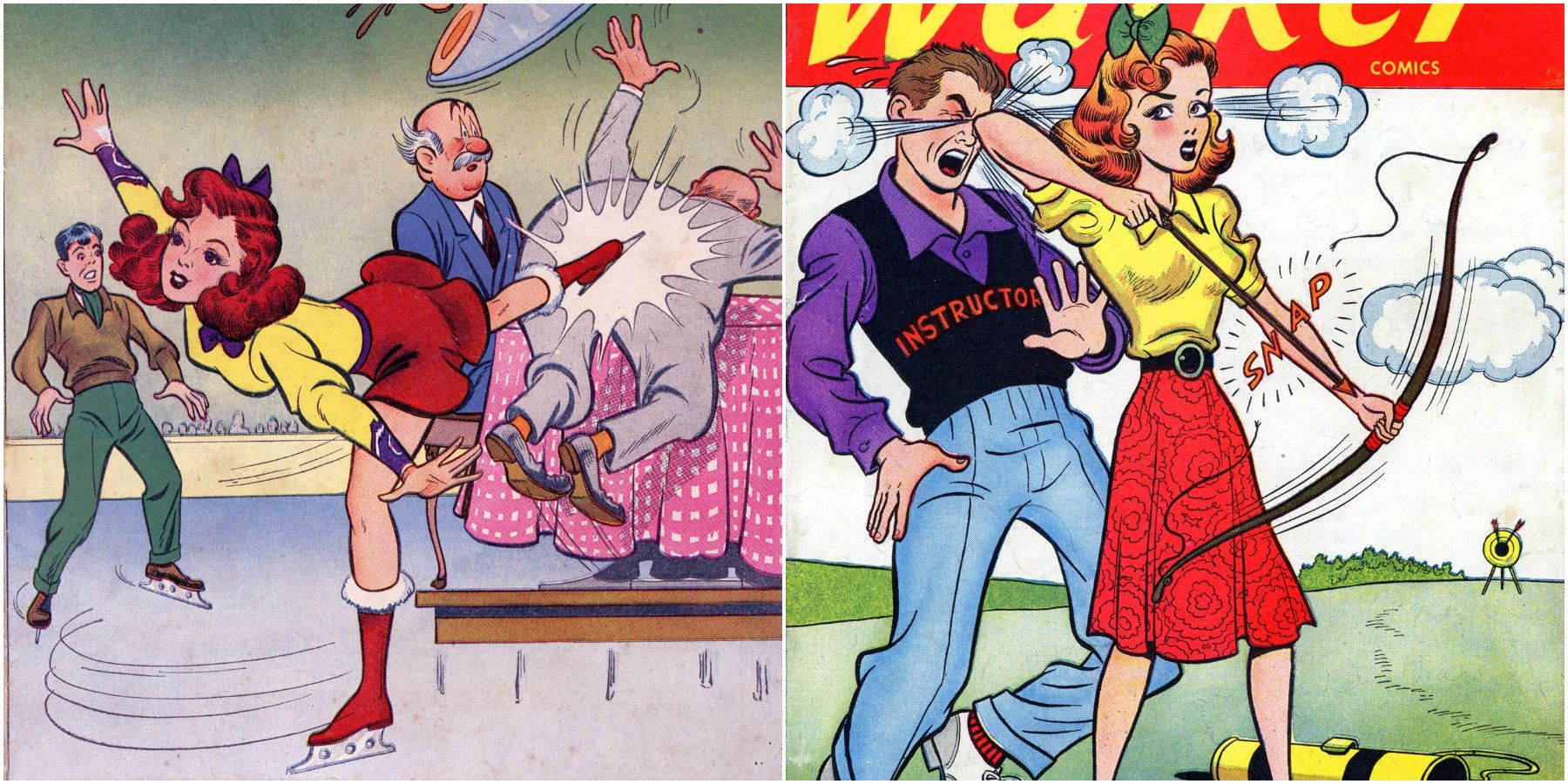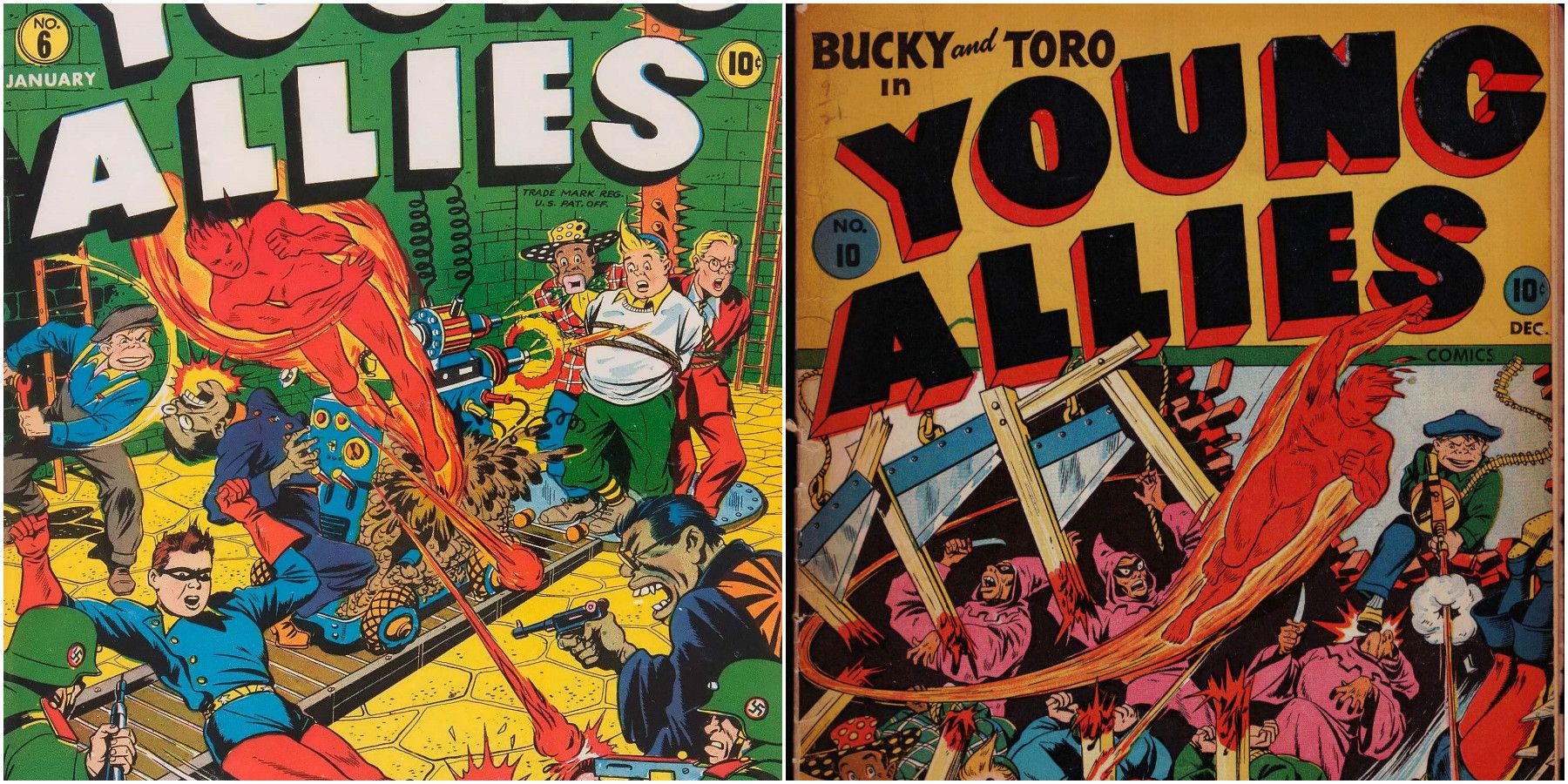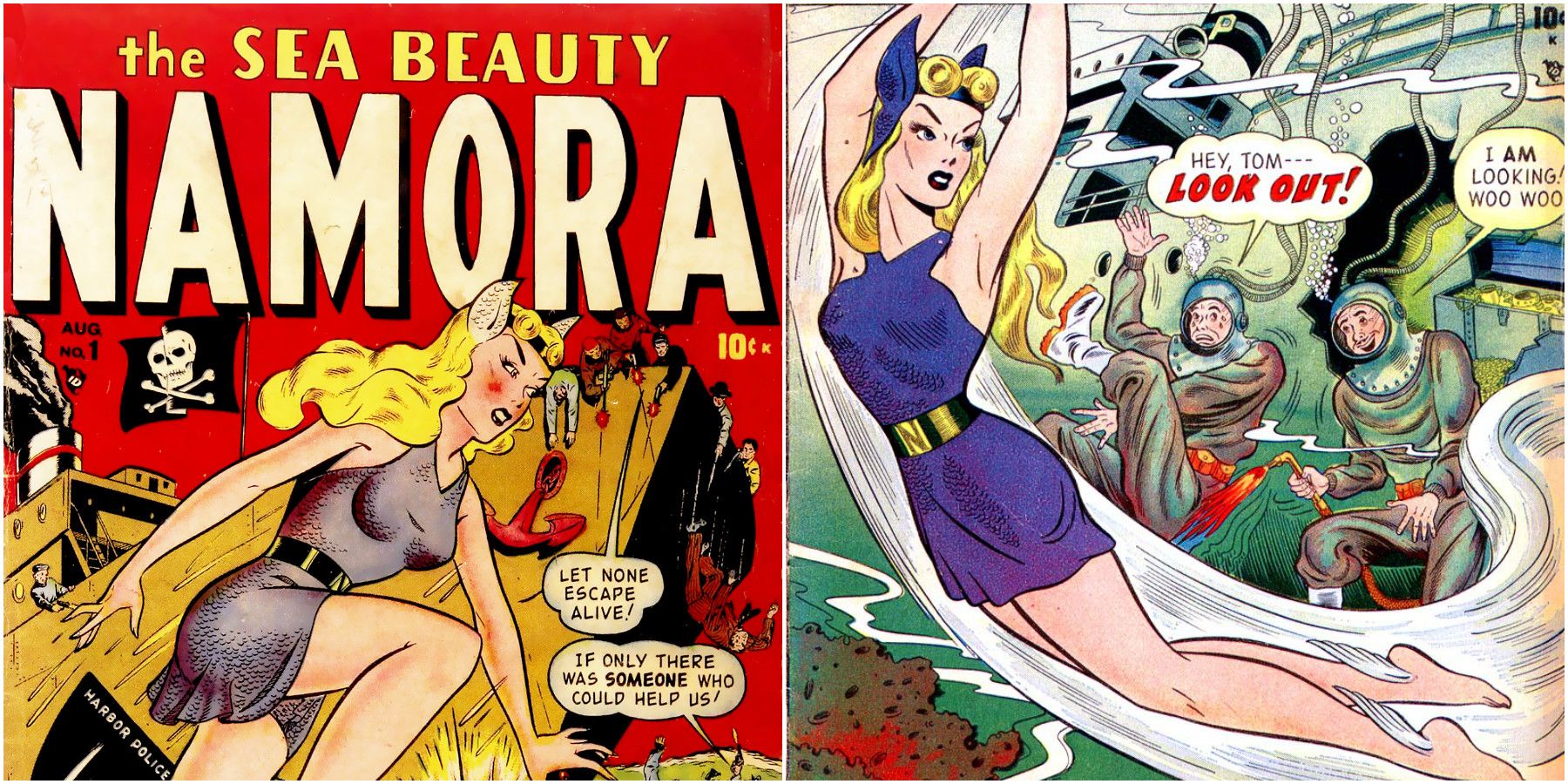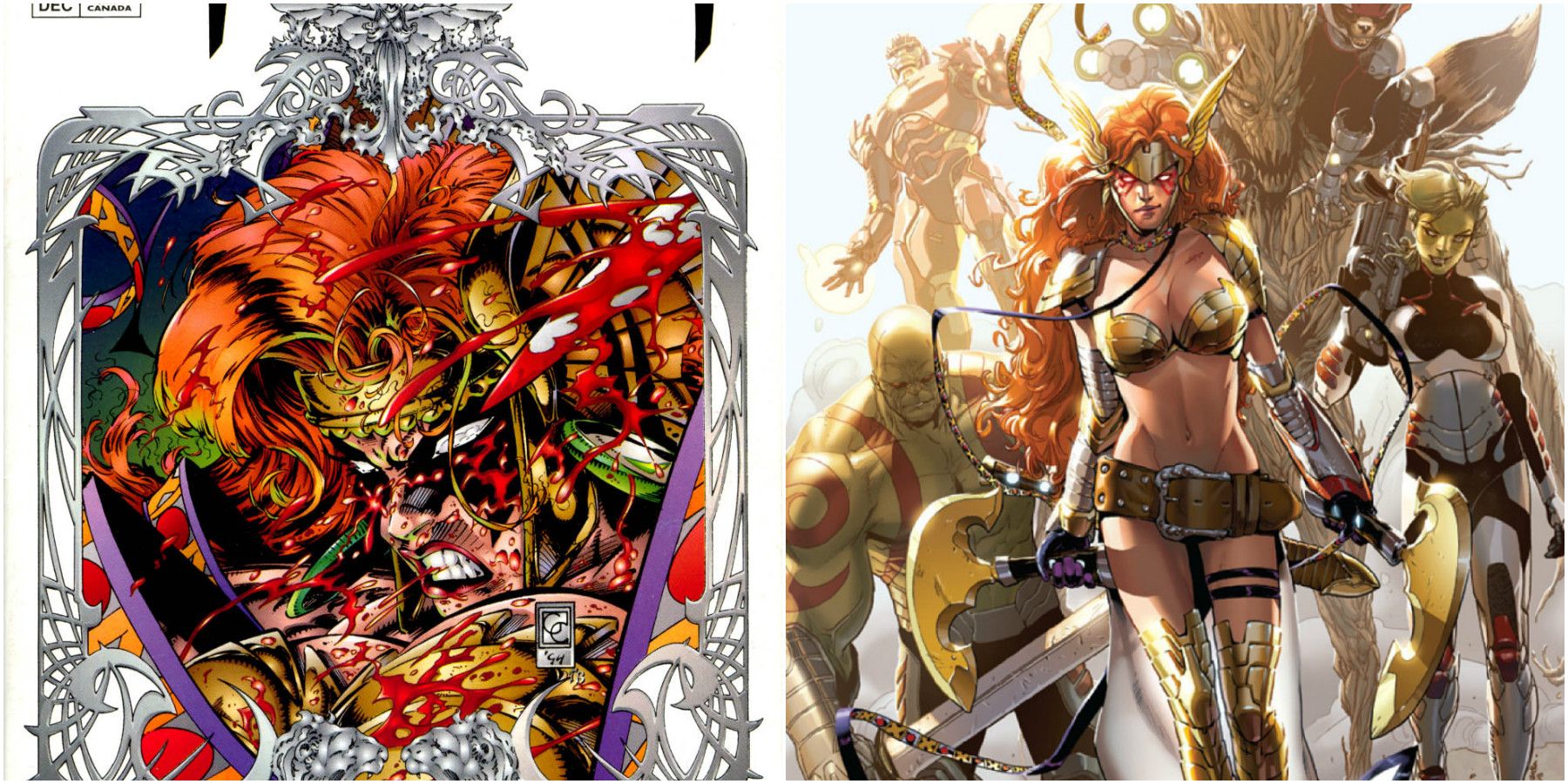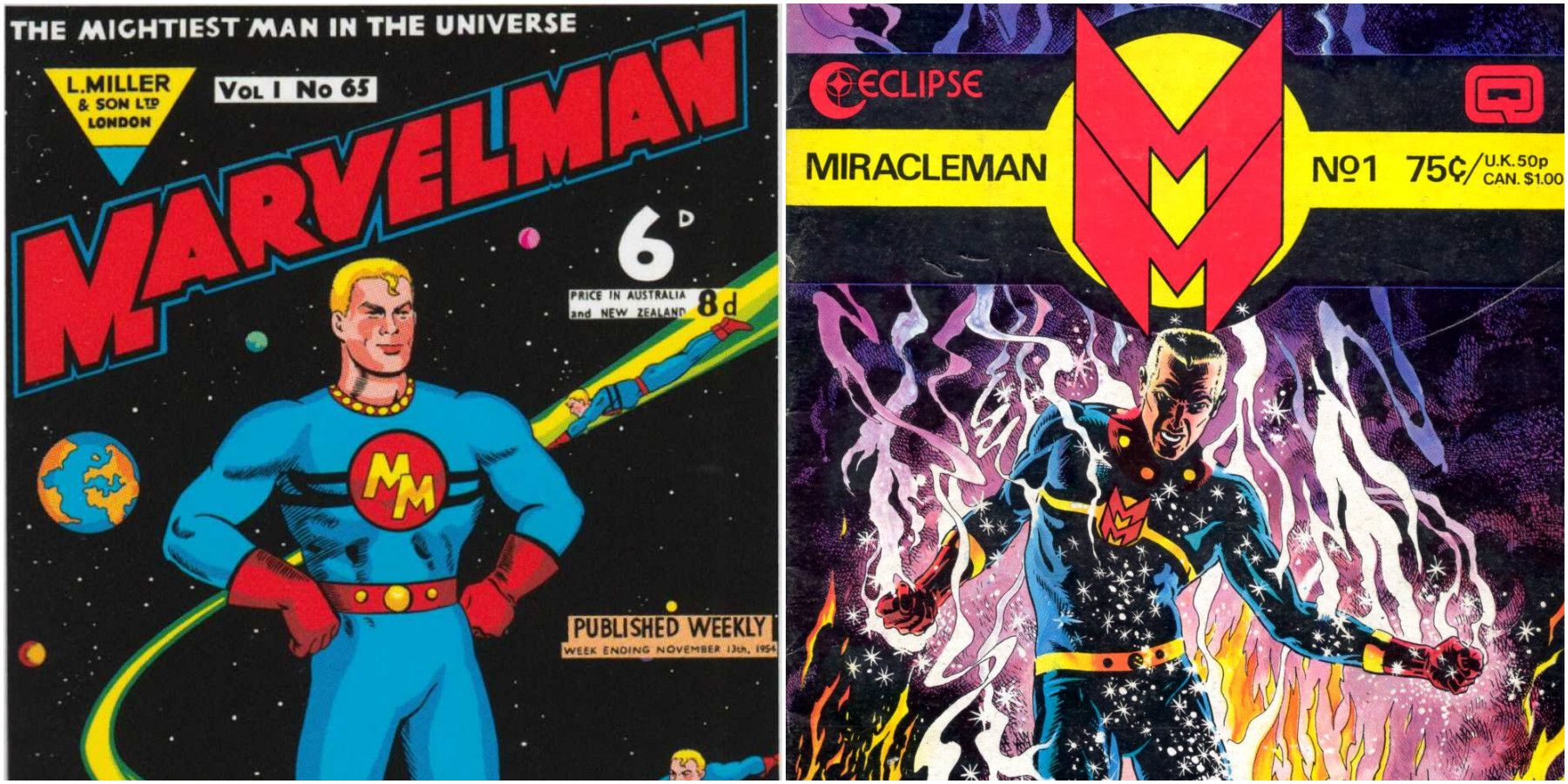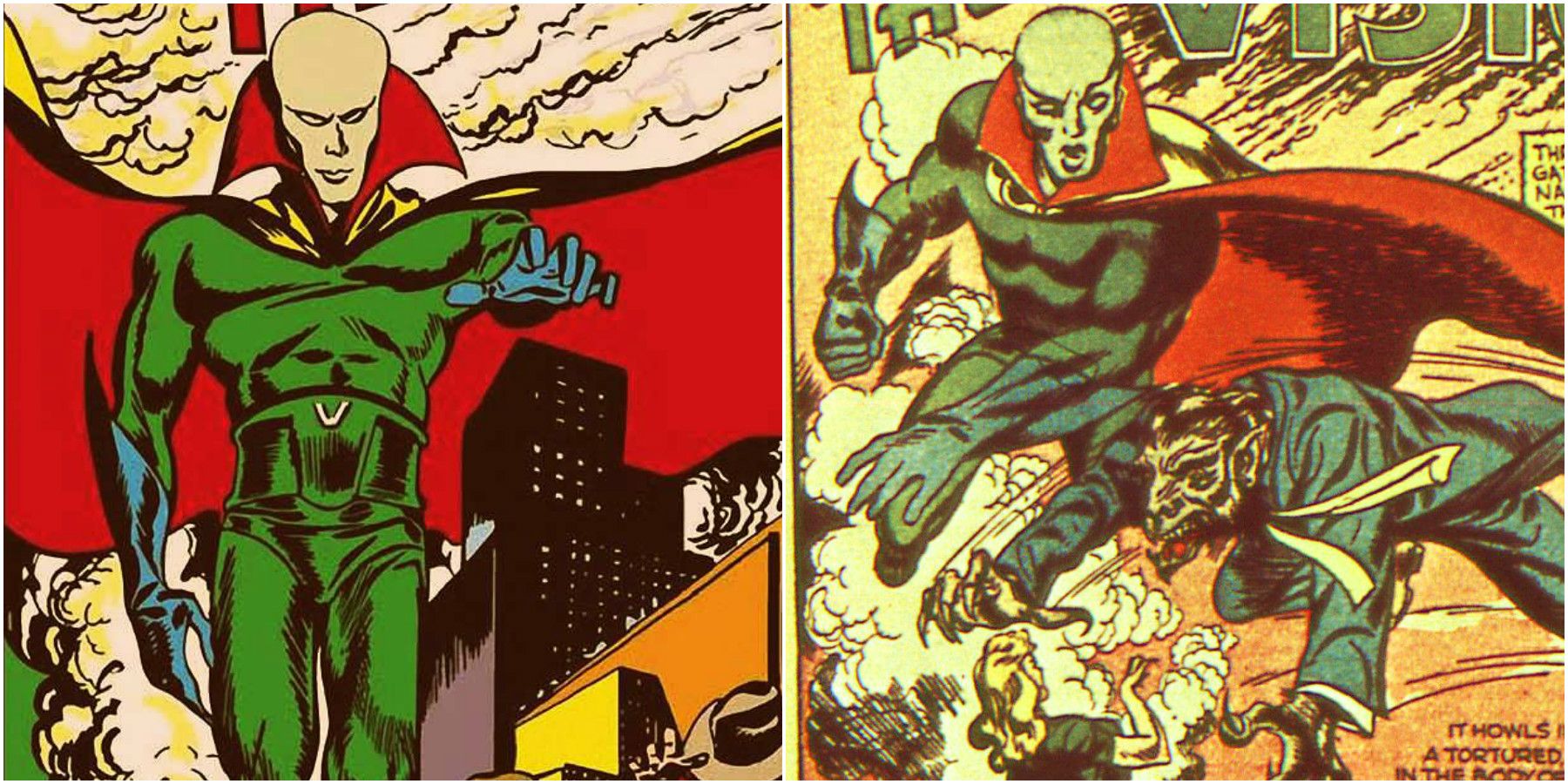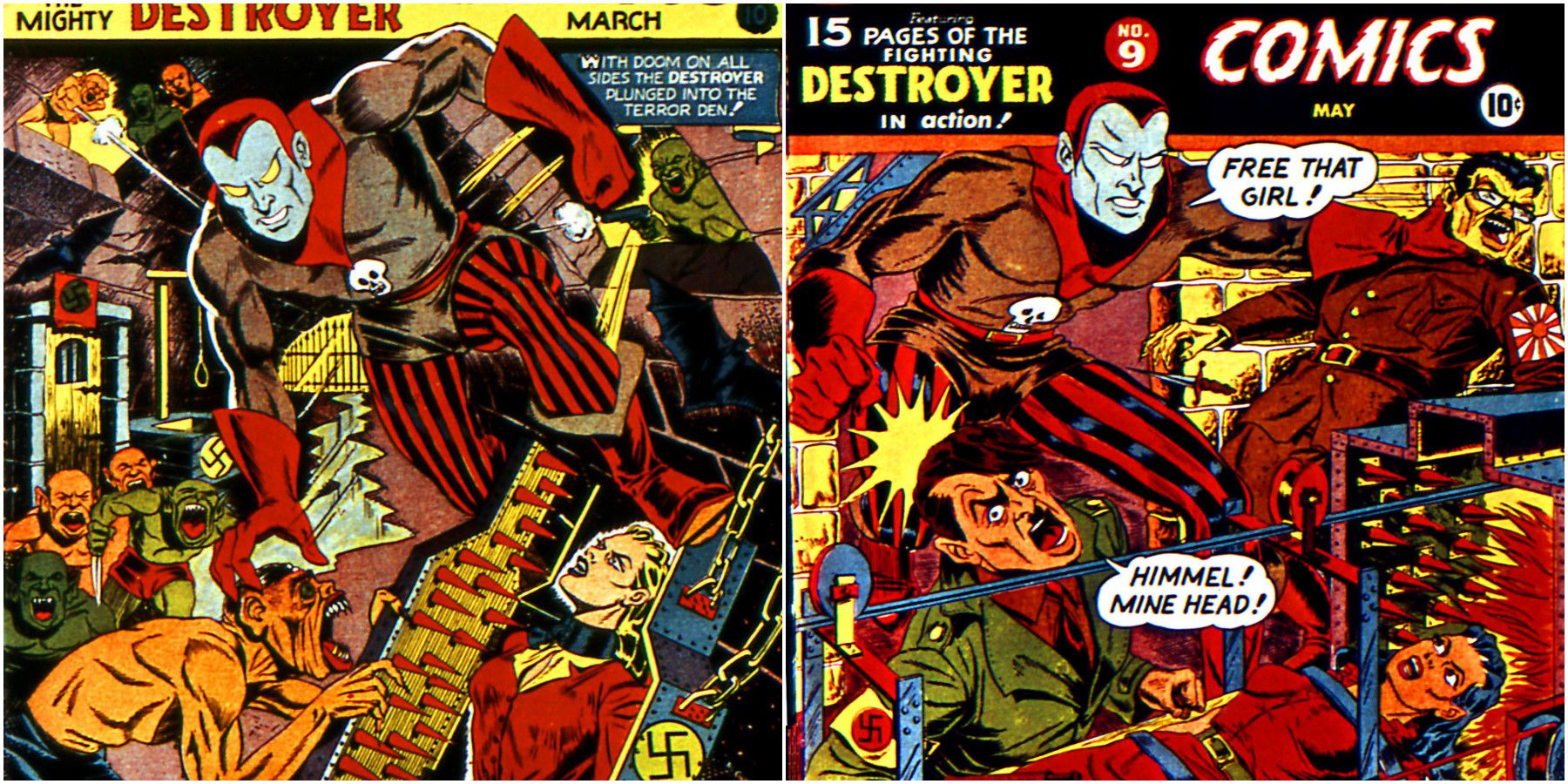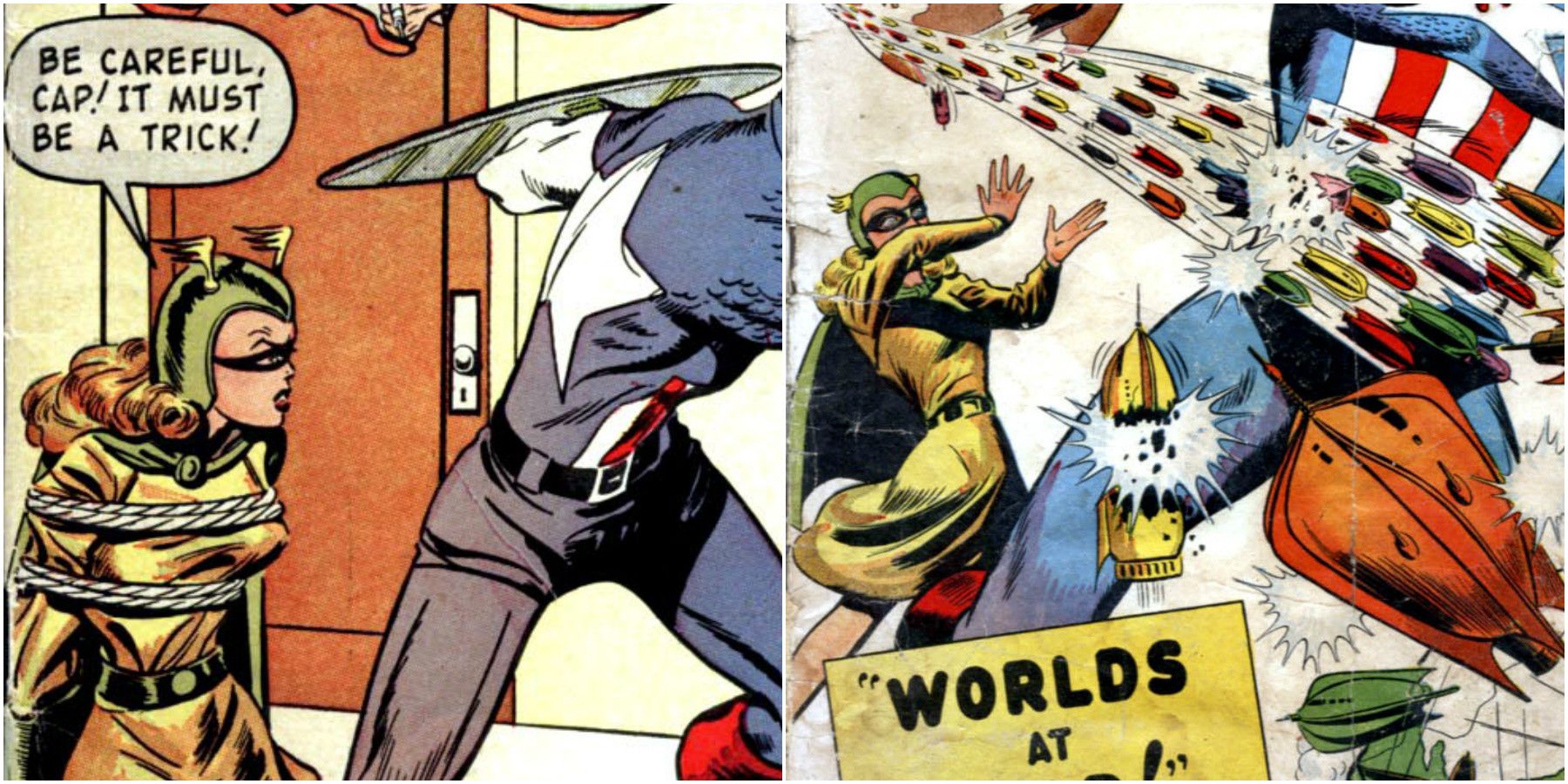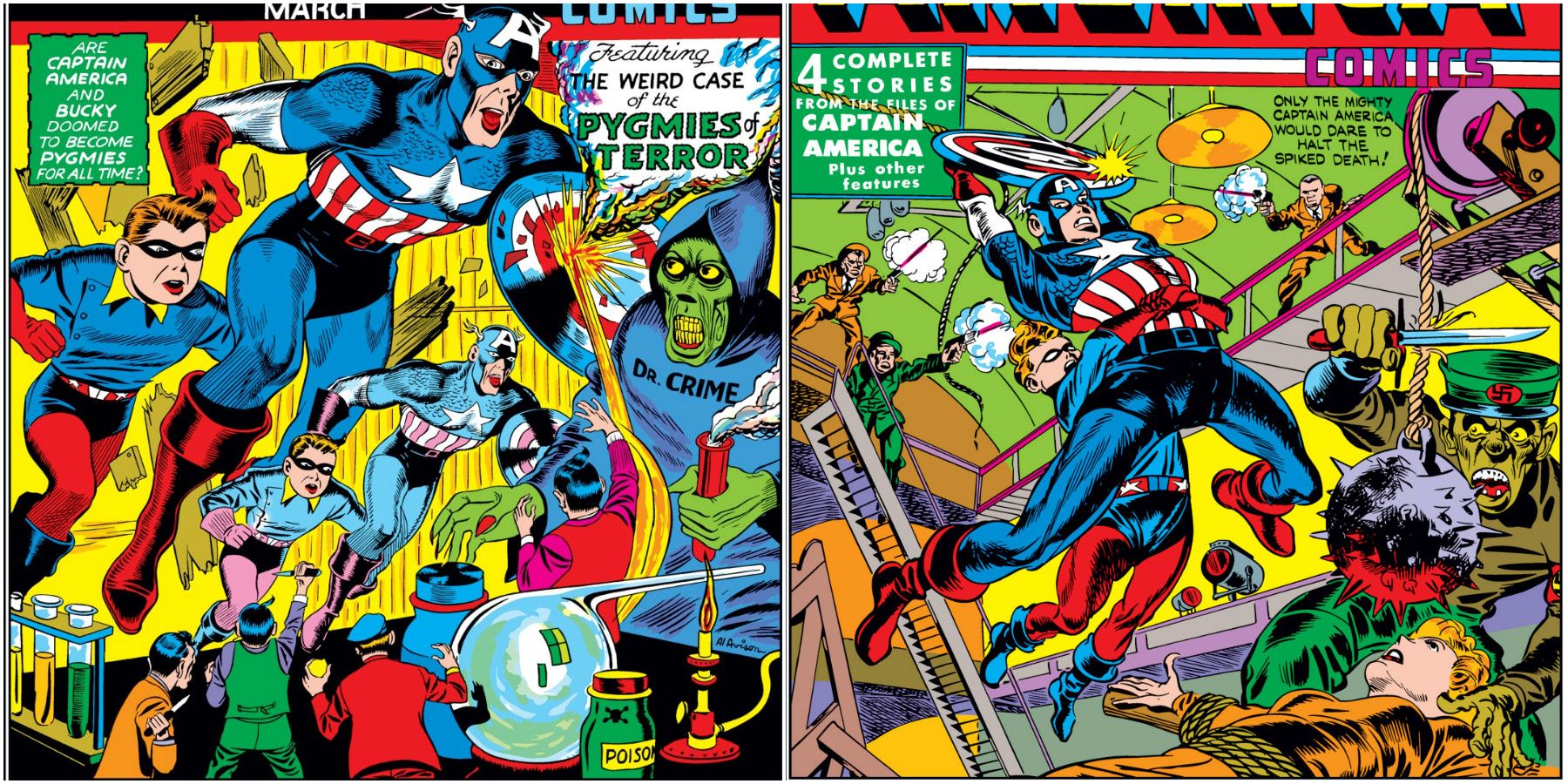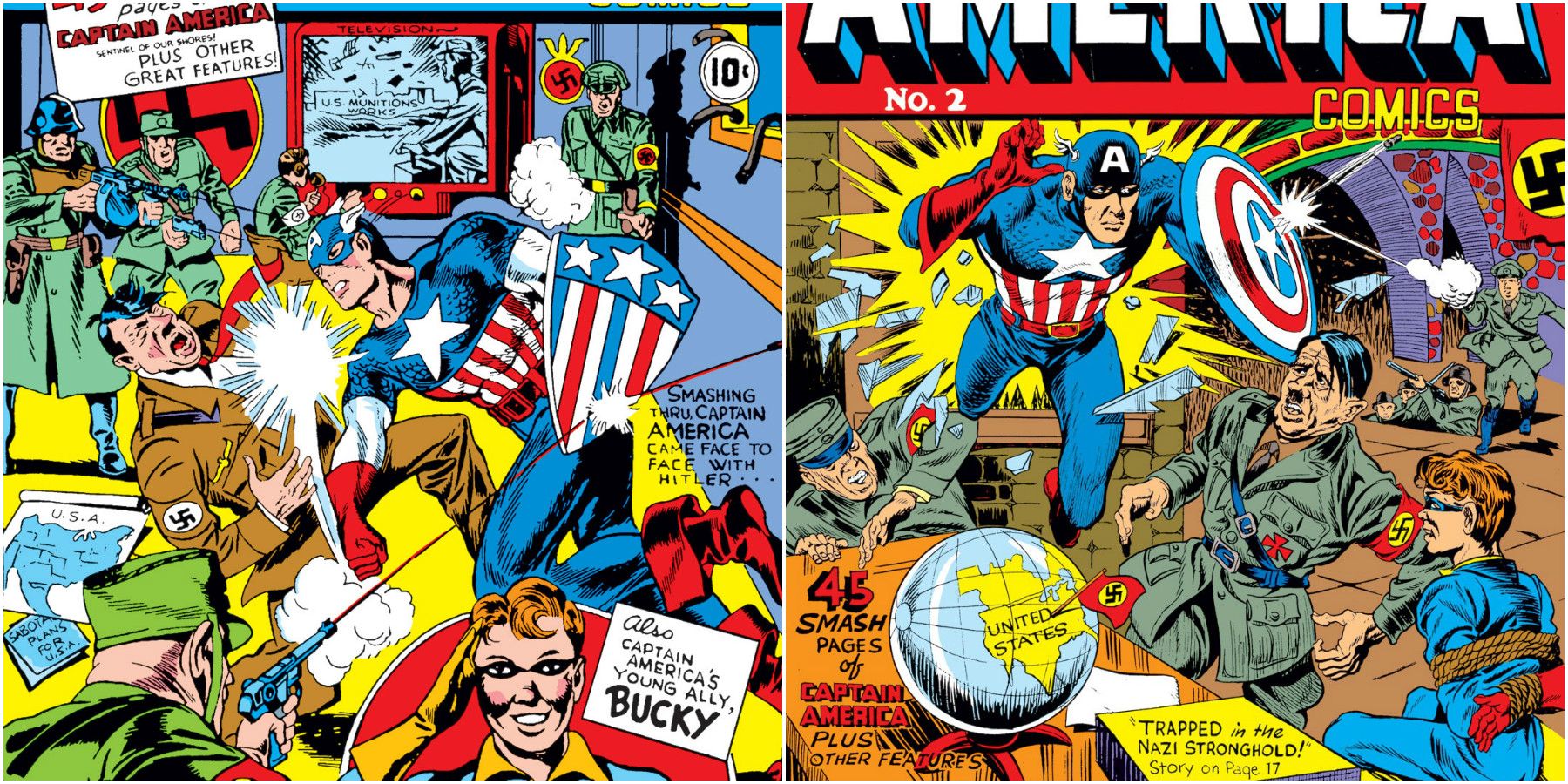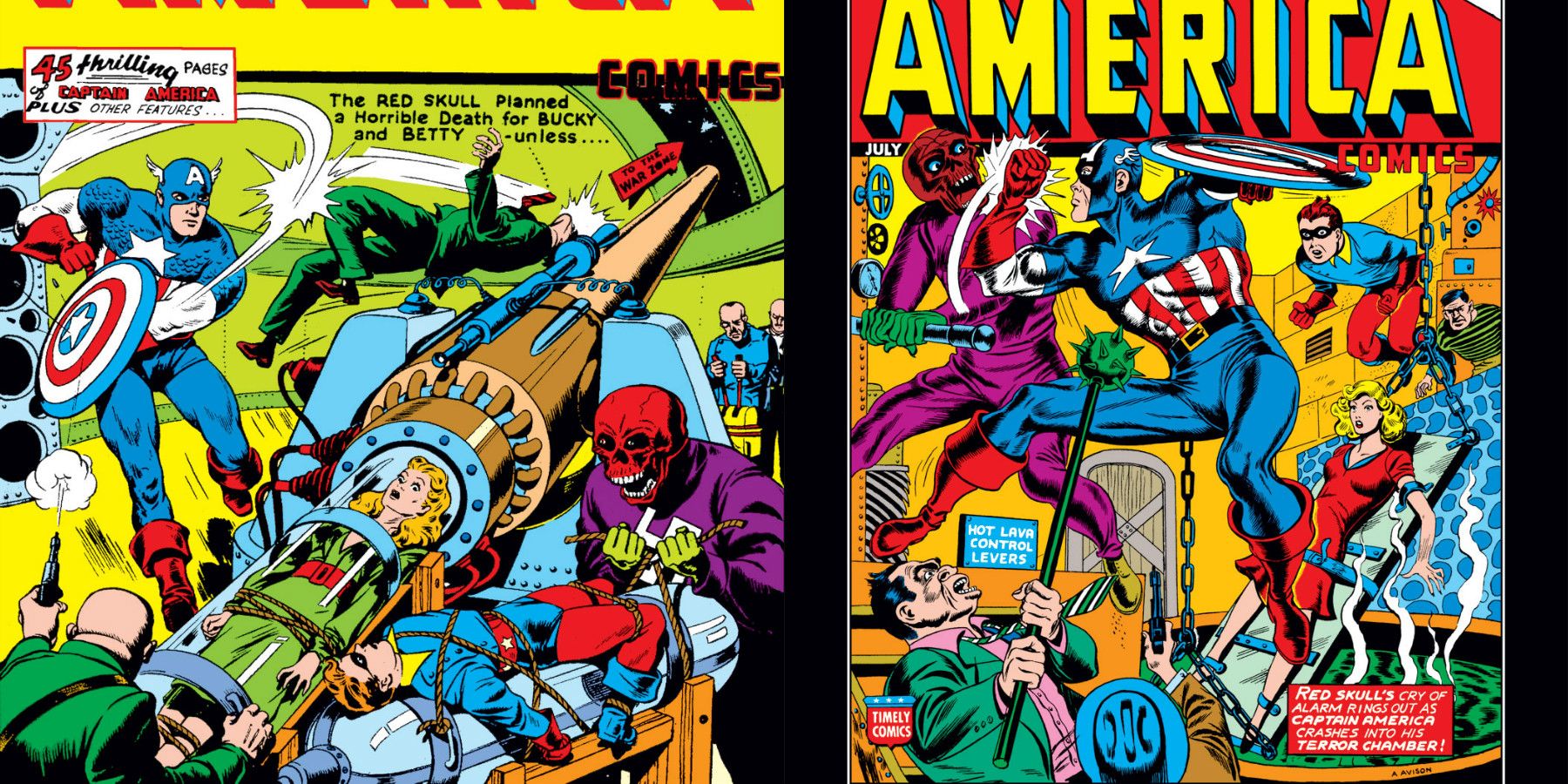Marvel Comics is a full-on juggernaut these days. In addition to creating dynamic and successful comics month after month, the company has gained worldwide appeal through its Marvel Cinematic Universe. This means that people who may never have wanted to pick up an issue of Spider-Man or Iron Man will nonetheless be first in line to see both characters in Spider-Man: Homecoming on its opening night. Marvel is now creating entirely new generations of fans, but even longtime readers sometimes forget just how many generations some of these characters have been around!
Marvel and its characters are primarily associated with the “Silver Age” of comics, which is around the time that the world gets introduced to characters like Spidey, Iron Man, the Avengers, and the Fantastic Four. However, there are a great many Marvel comics characters that are older than Marvel itself! How does that work out?
In some cases, they were characters created for Timely Comics or Atlas Comics, which later became Marvel Comics. In other cases, they were brought into Marvel via weird litigation, typically involving Todd McFarlane. Is your head spinning yet?
Fortunately, you don't need Samuel L. Jackson to break into your home and explain this to you.. All you need is this handy guide to the 15 Marvel Characters You Didn't Know Started At Other Publishers.
15. Black Widow
Everyone knows who the Black Widow is: she's the superspy from Russia and was for years the lone female hero in the MCU. And while Scarlet Johansson's performance as Black Widow in the Marvel Cinematic Universe has made the character a worldwide phenomenon, there was another character using that name way back in 1940!
The first Black Widow was created by Timely Comics and had nothing to do with Russia or spying. Instead, she was a black-clad servant of Satan, and her whole deal was killing bad guys so she could deliver their souls to the devil!
You'd expect this premise to stay buried in the '40s, but when Marvel Comics brought her back in some modern day flashbacks before featuring her heavily in The Twelve, a comic series that focused on vintage heroes who were cryogenically frozen by Nazis and later thawed out in the present day. Her opinion on the 21st century's obsession with “sexy witch” costumes remains unknown, however.
14. Human Torch
The Human Torch is a name familiar to all comics fans. He's the wise-cracking hothead of a hero that bursts into flames as part of the Fantastic Four, and he was made famous onscreen by Chris Evans before that actor went on to immortalize another comic character: Lucas Lee. Oh, and some guy named Captain America. Long before any of this, however, the Human Torch was actually an android superhero!
Created by Timely Comics, the Human Torch was once part of their trifecta of popular heroes that also included the cranky fish guy Namor and some other heroes you'll soon read about. The android's earliest adventures vacillated between him being monster and hero, but his hero status quickly solidified when he joined Namor & co. to battle Nazis as the supergroup The Invaders.
The name and powerset of the character was obviously revived for the Fantastic Four comic, but the original Torch has appeared in later issues as a revived killer android, a buddy of Iron Fist and Luke Cage, and occasional Avenger.
13. Namor
Namor is a character whose popularity regularly rises and falls, not unlike the waves of his precious oceans. He was one of the first true hit characters for Timely Comics, and as mentioned earlier, part of the super-popular trio that included Captain America and the Human Torch. The character's mercurial nature was established very early on: he was a straight-up nemesis to America, and his memorable exploits included trying to destroy all of Manhattan with a tidal wave.
Like many early comics characters, World War II gave him a purpose, and he helped Captain America and the Human Torch fight Nazis. The character experienced returned briefly in comics published by Atlas comics, and he entered into the modern Marvel canon when he appeared in The Fantastic Four.
More recently, Marvel has had trouble getting solo Namor stories to sell, though you can typically count on him to pop up in adventures with the X-Men (he claims to be the world's first mutant), the Avengers (they can always use more arrogant people with powers), and the Fantastic Four (because he never misses a chance to flirt with the Invisible Woman).
12. Miss America
As a company, Marvel has taken some PR hits for their lack of diversity when it comes to female characters. Hit characters like Black Widow are denied solo movies, and standout comics like Mockingbird get bogged down by weird, online misogynists before being canceled. All of this modern diversity-related-drama makes it especially interesting that Timely Comics debuted an ass-kicking female hero back in 1943: Miss America!
This was a character who could fly and had super strength (at least, when the writers remembered) after an incident with a special machine, and she ended up having her own set of awesome adventures with Captain America, the Human Torch, Namor, and Toro.
The character's modern legacy gets a little complicated. At one point, she was alleged to be the mother of Quicksilver and Scarlet Witch, and though this was retconned, we have also seen her as a ghost impostor in hell and a killer cyborg. More cheerfully, a modern character going by this name is a Latin-American lesbian hero who continues the struggle for diversity and visibility that her predecessor started.
11. Patsy Walker
Of all the characters on this list, Patsy Walker probably has the most “meta” story of them all. Modern audiences are most familiar with this character as Jessica Jones' friend “Trish” Walker, someone who had a history of being a redheaded childhood television star. As it turns out, this is a weird homage to the even weirder tale of her comics character!
Her earliest appearances were in publications by Timely Comics, and these comics were almost exclusively in the “teen humor” vein of comics. They were popular, too: the Patsy Walker comic was published by Timely, then Atlas, and continued to be published by Marvel. Later, Patsy Walker popped up in Marvel Comics like Fantastic Four and The Defenders.
This is where it gets weird: it turns out Patsy is a real person within the Marvel universe, and those early comics were created by her mother, based on Patsy's life, and actually existed within the Marvel Universe. In time, she'd become a superhero named Hellcat who goes from vigilantism to marriage to the Son of Satan (no, really) to suicide to resurrection as a quirky character who is part-sidekick and part-featured player of modern Marvel Comics.
10. Toro
If you were looking at them side by side, you'd have a lot of trouble telling the difference between Toro and the Human Torch. This was because he had the exact same power set due to some artificial cells placed in his body by his parents, two people who helped create the Human Torch. After they died and his powers manifested, Human Torch took him under his wing. Like many Timely Comics heroes of the time, this mostly meant adventures punching Nazis and other assorted bad guys.
Toro is one of those rare characters to thrive in several eras. He was a star of Timely Comics along with the rest of The Invaders, and he popped up briefly in Atlas Comics and their comic entitled Young Men. It didn't take long for him to return to Marvel canon in various flashback stories before being resurrected in the present day.
He's had a rough time of it, from being vivisected by the villain Mad Thinker to watching a revived Human Torch go on multiple killing sprees. Finally, contact with some Terrigen mist reveals he is actually an Inhuman, too. It's enough to make him miss the Nazis!
9. Namora
At first glance, “Namora” looks like a bit of lazy naming. You can almost imagine the Timely Comics writers' room at the end of a long day: “hey, what do we call this female Namor?” “It's late, Ken, just call her Namora.”
However, “Namora” was actually a nickname for her crazy-long name, “Aquaria Nautica Neptunia.” The bottom line is that she is Namor's ass-kicking cousin, and they have several adventures together before she is poisoned by terrorists and dies. She was succeeded by her cloned “daughter,” Namorita, and you'd expect her story to be over.
However, Marvel Comics later brought her back when the superteam Agents of Atlas found her coffin. What appeared to be her dead body was actually a holographic display and, Jean Grey style, she was perfectly healed and preserved underwater.
She ends up joining the team that finds her and has had a colorful publication history ever since, from helping Hulk try to take over the world to warding off Amazons to fighting Norman Osborn. Oh, and hooking up with Namor, of course. The Invisible Woman was probably just happy to stop getting his heavy-breathing phone calls (at least, until he and Namora broke up).
8. Angela
Unlike most characters on this list, Angela started over at Image Comics back in the day (her battle bikini and giant sword are your main giveaways). She first appeared in a Spawn comic that was co-written by legendary writer Neil Gaiman. Spawn creator Todd McFarlane had previously agreed that the rights would return to Gaiman for these characters. Later, he backed out and claimed that he had made no legal promise to return Angela and the other characters, and he rubbed salt in the wound by not paying Gaiman for reprints of his issue.
So, Gaiman took McFarlane to court. He got a nice settlement, and when the smoke cleared, both men owned the rights to Angela. Ten years later, they buried the hatchet and McFarlane fully returned the rights to Angela to Gaiman.
One year later, Marvel Comics brought Gaiman back in as a writer, and Angela was introduced into the Marvel canon. She has wacky adventures with the Guardians of the Galaxy before discovering she's the long-lost sister of Thor and Loki.
7. Miracleman/Marvelman
The character of Marvelman (later known as Miracleman) has also had a strange publication history. His comics were being published in America by Fawcett Comics under now very-familiar name of Captain Marvel. However, Fawcett faced a lawsuit from DC over the rights to the name, so Fawcett stopped publishing Captain Marvel. The creator, undeterred by the legal struggle, convinced British comic packager Mick Anglo to change the name to Marvelman.
Thanks to Mick Anglo, his “Marvelman” adventures continued over in the UK in black-and-white. They were popular, but the eventual import of color imported comics put Marvelman out of business. However, legendary writer Alan Moore brought the character back in the comic Warrior. Eventually, reprints changed the character's name to “Miracleman,” and his ownership went to Eclipse comics, which was later bought by Todd McFarlane.
There was a struggle over the rights to the character between McFarlane and Neil Gaiman (who had written several iconic Miracleman comics for Eclipse) that ended up being moot, as the rights still belonged to Mick Anglo. Marvel bought the rights from Anglo, and Gaiman was finally able to finish his story arc for the character.
6. The Vision
As with the Black Widow and the Human Torch, The Vision is a name that most Marvel fans are now familiar with. He is the robotic Avenger who helps save the world when he's not awkwardly flirting with Scarlet Witch. However, the first character to use this name was quite different.
The Vision was a Timely Comics character who was actually an alien from a planet known only as Smokeworld. The Vision is basically an alien cop, and he spends most of his time tracking down bad guys, with the notable exception of the time he was tricked into working against the Allies during World War II.
He can fly, teleport (but only where there's smoke), and summon extreme cold. The Vision started at Timely Comics, but he became Marvel canon when a vision (no pun intended of him) from the mind of Rick Jones ended up helping the Avengers during an offworld alien skirmish.
In the present day, he is unceremoniously brought back as a sewer-dwelling guardian of a Cosmic Cube. Since then, he's had time-traveling tales as well as adventures helping the X-Men and the Winter Soldier.
5. The Destroyer
Even for most hardcore comics fans, the name of The Destroyer doesn't ring too many bells, unless it's attached to Drax. However, The Destroyer was a Timely Comics character with a hell of a pedigree: he was created by Stan Lee! The character was wildly popular, too, and most of his best adventures involved fighting Nazis in Europe during its occupation by the Axis. He started out in Mystic Comics, but his popularity soon saw the character appearing in almost every one of Timely's comics.
When it comes to powers, he's basically like Captain America: he's powered by a super-soldier serum and dons a crazy costume to go kick the Nazis out of Europe. When he's brought into Marvel canon, it comes with a retcon: the character's secret identity is now Brian Falsworth instead of Keen Marlow, and he's the brother of the hero Spitfire.
Later retcons specify that Keen Marlow was simply a name used by Falsworth, and the character Roger Aubrey took over the mantle of The Destroyer. Unfortunately, this meant giving up the best hero name ever: Dyna-Mite! A later series focuses on the elderly Marlow as he goes on one last mission of blood and vengeance.
4. Golden Girl
Chances are that the name “Golden Girl” is likelier to bring up thoughts of Bea Arthur rather than a superhero. Nonetheless, this was the moniker of a young lady who once served alongside the greatest hero of them all: Captain America! She had no powers except hand-to-hand training and a bulletproof cape, and when the second Bucky got shot and seriously injured (guess who didn't have a bulletproof cape?), she took over as Cap's primary sidekick.
Under the Timely Comics publication, she took the name of Betsy Ross to honor the woman who created the American flag. She became the sidekick to the third man to use the Captain America name and had some wild adventures, including grappling with Red Skull in Hell itself! She eventually married that Cap and retired to Florida after he died.
Her adventures have been fleshed out via flashbacks in Marvel Comics, and in a fun retcon, she was made into the aunt of General Thunderbolt Ross, the man who would make life hell for both Bruce Banner and his green-skinned alter-ego, The Incredible Hulk!
3. Bucky Narmes
Unlike some of the characters on this list, Bucky Barnes has experienced a pretty amazing revival in the last twelve years. Initially, Bucky was the archetypal young sidekick to Captain America back when both of their adventures were published by Timely Comics. Under this publisher, Bucky was mostly safe. While the second Bucky got injured and replaced with Miss America, the character was very much alive when Timely stopped making Captain America comics.
When Bucky and Captain America were brought into regular Marvel continuity in the early Avengers comics, it was firmly established that Bucky did not return from their final mission, and later comics solidified that he died. For about four decades, he actually stayed dead, only popping up in the occasional flashback. However, writer Ed Brubaker brought the character back as the Winter Soldier in 2005, and that character has now become a major part of the Marvel Cinematic Universe.
Hopefully, Marvel will leave this one-in-a-million successful resurrection attempt alone, or we might just see Uncle Ben come back with a bionic arm to fight Spider-Man!
2. Captain America
More so than almost any other comic character, Captain America arrived on the scene fully formed. Many comics characters evolve significantly over time: fans love to point out the times that Golden Age Batman killed, for instance. However, the cover of the first Captain America comic has a man dressed like an American flag punching Hitler, and this is the perfect personification of freedom and idealism standing against fascism and oppression. Captain America was born!
Fittingly enough, this Timely Comics character flourished throughout the entirety of World War II, but his popularity (and that of most hero comics) faded quickly thereafter. Timely stopped making his comics in 1950. Later, Atlas comics brought the character back in embarrassing fashion as “Captain America, Commie Smasher.”
Finally, the fourth issue of The Avengers comic brought Cap into modern Marvel canon, and those “Commie smashing” adventures were retconned as being the adventures of a very different (and deranged) Captain America. However, the way Marvel is now portraying the character in Secret Empire means they may have to call him “Nazi smasher” for a while to make Cap seem cool again!
1. Red Skull
With all of this talk of the Golden Age adventures of Captain America and Bucky, you must have known Red Skull couldn't be far behind! In terms of design, he was very similar to the Red Skull that modern audiences love to hate: he's a red, skeleton-faced dude working to overthrow America. However, he experienced some changes early on: the first Skull that Cap fought was actually a mask-wearing profiteer, and the true Red Skull wouldn't be introduced until Captain America #7.
The true Red Skull was Nazi soldier Johann Schmidt, and he has been the primary Captain America nemesis since his introduction. He fought Captain America in the old Timely Comics, and later Marvel Comics would establish that, conveniently enough, he was also in suspended animation after the war and returned to terrorize the modern world.
His trademark skull appearance also started as a mask. However, his own weapons have transformed it into a genuine skull face, and his mind has jumped around quite a bit: he has inhabited a clone of Captain America and a Soviet general named Aleksander Lukin. Furthermore, a completely unrelated clone of Red Skull has tormented the Uncanny Avengers and nearly taken over the world!
---
Who is your favorite Golden Age Marvel character? Be sure to let us know in the comments!

